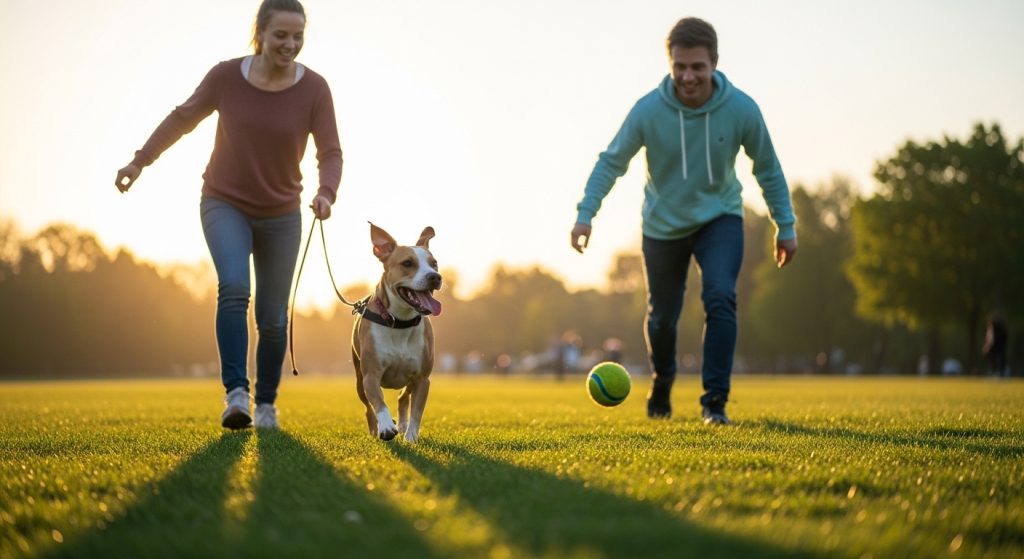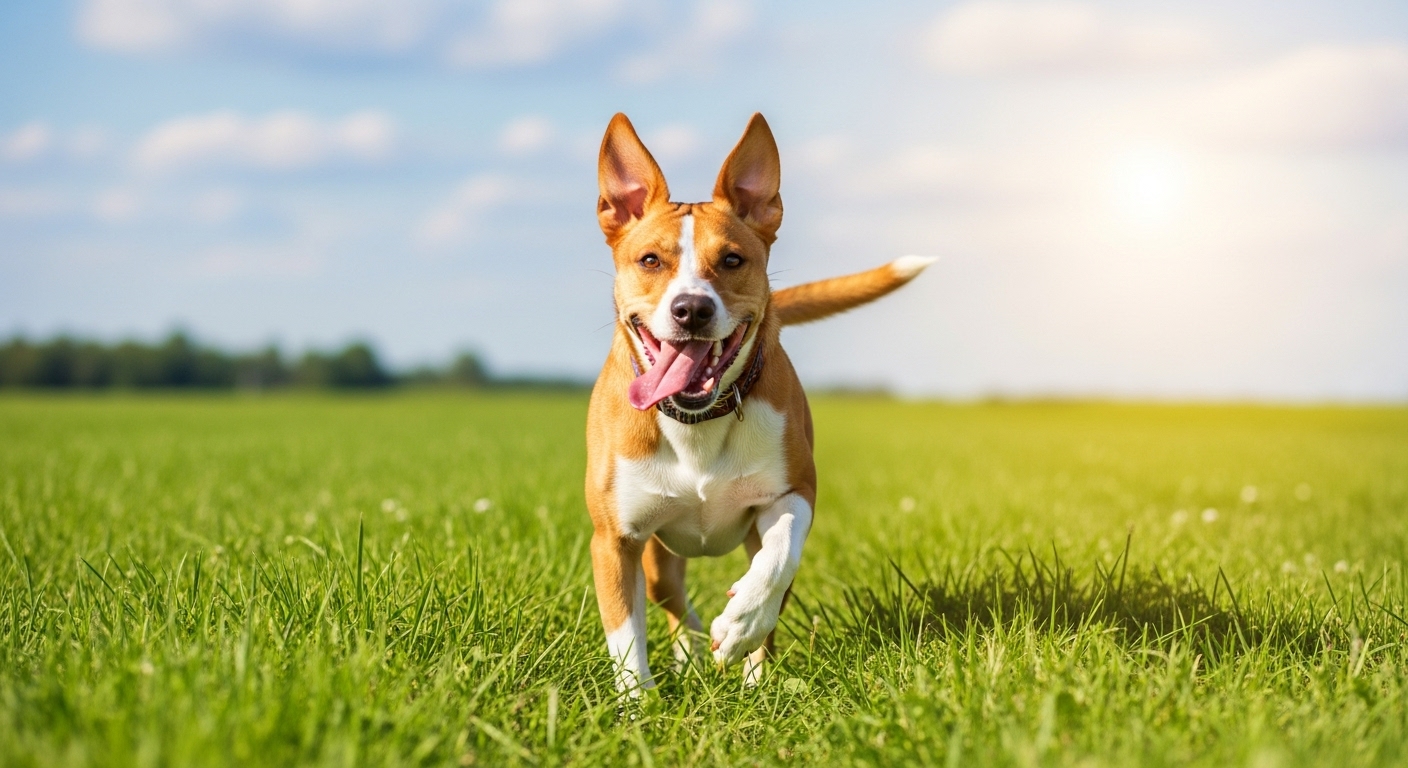Obesity in dogs has become one of the most common yet overlooked health issues among pet owners today. According to the Association for Pet Obesity Prevention (APOP), more than 50% of dogs in the U.S. are overweight or obese. This isn’t just a matter of looks—it’s a serious health risk that can shorten your dog’s lifespan and lead to chronic diseases such as diabetes, heart issues, and joint problems.
But here’s the good news: you can prevent dog obesity with a few simple lifestyle adjustments. You don’t need expensive diets or fancy gym routines for your pup. What you do need is a consistent plan built around nutrition, exercise, and daily habits that promote health and happiness.
In this post, you’ll discover practical and easy-to-follow strategies to keep your dog lean, active, and full of life.
Nutrition—The Cornerstone of a Healthy Weight
A. Understand Your Dog’s Caloric Needs
Every dog has unique calorie requirements depending on age, breed, activity level, and size. For instance, a small breed like a Chihuahua might need fewer than 300 calories a day, while a large Labrador could require over 1,200. Overfeeding—even by a small margin—adds up over time.
To get started:
-
Consult your vet for your dog’s ideal weight and daily caloric intake.
-
Use an online dog calorie calculator as a reference.
-
Read food labels carefully; avoid brands that use fillers such as corn, wheat, or soy.
A helpful rule of thumb: If you can feel your dog’s ribs but not see them, they’re likely at a healthy weight.
B. Switch to High-Quality, Balanced Meals
Premium-quality dog food is formulated to deliver the right balance of protein, fat, and fiber. Look for real meat as the first ingredient and avoid artificial preservatives or colors.
If you prefer homemade meals, consult a canine nutritionist to ensure proper balance. Include lean proteins (chicken, turkey, or fish), vegetables (carrots, spinach, broccoli), and small amounts of healthy fats like salmon oil.
C. Control Treats and Snacks
Treats are one of the biggest hidden culprits in dog obesity. A few bites here and there can add hundreds of calories each week. Try these alternatives:
-
Baby carrots or cucumber slices
-
Air-popped popcorn (no salt or butter)
-
Small apple chunks (no seeds)
Use treats as rewards for good behavior, not as random snacks. And remember: treats should never exceed 10% of your dog’s daily calorie intake.
D. Establish a Consistent Feeding Schedule
Free-feeding (leaving food out all day) encourages overeating. Instead, feed your dog two or three measured meals per day. Consistency helps regulate metabolism and reduces begging behavior.
Pro Tip: Use a slow feeder bowl to make meals last longer and prevent rapid eating, which can lead to bloating or indigestion.
Exercise—The Joyful Path to Fitness
Daily Walks: Simple but Powerful
You don’t need to turn your dog into an athlete—just commit to regular, consistent movement. Start with two 20–30 minute walks per day. Walking helps burn calories, improves joint flexibility, and keeps your pup mentally stimulated.
Try changing routes occasionally to keep things interesting. Dogs love exploring new scents and surroundings—it’s exercise for both body and mind.
Make Playtime Count
Exercise doesn’t always mean a leash walk. Engage in fun, calorie-burning games such as:
-
Fetch: Boosts speed and endurance.
-
Tug-of-war: Builds muscle tone.
-
Hide-and-seek: Encourages mental stimulation and bonding.
If your dog enjoys water, swimming is an excellent low-impact workout, especially for older or joint-sensitive pets.
Keep Track of Progress
Monitor your dog’s activity with a pet fitness tracker or smartphone app. Record daily steps, duration, and intensity to identify progress.
Reward consistency with praise and attention, not food.
Avoid Overexertion
Remember, dogs—especially senior ones—can overheat or strain easily. Watch for signs of fatigue: heavy panting, limping, or reluctance to continue. Always provide water breaks and shade during outdoor sessions.
Bonus Tip: Create a weekly “dog fitness calendar” where you alternate between walks, playtime, and rest days for a balanced approach.

Building Healthy Routines for Long-Term Success
a) Maintain Regular Vet Checkups
Schedule biannual veterinary visits to monitor weight, check for metabolic issues, and adjust diet plans if necessary. Early detection of health problems—like thyroid imbalance—can prevent future obesity.
Ask your vet to maintain a weight record chart for your dog and review progress over time.
b) Prioritize Sleep and Stress Management
Yes, dogs need rest too! Lack of proper sleep or chronic stress can affect hormones that regulate appetite and metabolism.
-
Provide a quiet, cozy sleeping area.
-
Maintain predictable daily routines.
-
Avoid leaving your dog alone for long periods to prevent anxiety-related overeating.
c) Encourage Social Interaction
Dogs are pack animals. Social play with other dogs improves mood, increases activity, and prevents boredom-induced overeating. Visit local dog parks or organize small playdates.
d) Build a Healthy Habit Tracker
Create a simple weekly chart that includes:
-
Meal times & portions
-
Walk duration
-
Weight check
-
Treat log
Consistency is key. Within a few weeks, you’ll notice visible changes in your dog’s energy levels and physique.
e) Celebrate Progress—Without Overfeeding
Use non-food rewards such as:
-
A new toy
-
A cuddle session
-
A trip to the park
Celebrating achievements strengthens your bond and keeps your dog motivated.

Small Changes, Big Results
Preventing dog obesity isn’t about strict diets—it’s about sustainable lifestyle changes.
With mindful feeding, enjoyable exercise, and consistent habits, you can give your dog a longer, healthier, and happier life.
Remember, the best gift you can offer your furry friend is not just love—but a life full of vitality, balance, and joy.


